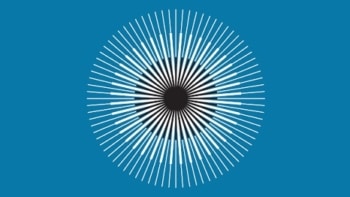
Quantum computers are often discussed as a technology of the future, but many devices exist already. Because there is no consensus on a single, universal quantum computer design, however, determining the best use for each existing device can be daunting. Recently, researchers at the University of Innsbruck in Austria started to address part of that question by proposing a new way to implement a quantum optimization algorithm by using extremely cold atoms. Their theoretical work could point towards an efficient way of using the strengths of existing quantum computation devices to tackle practical problems in logistics, the energy sector and finance in the near future.
The Innsbruck work centres on the quantum approximate optimization algorithm (QAOA), which recasts optimization in terms of minimizing the energy of a physical system of atoms. For example, instead of trying to find the best way to balance the electric grid, physicists can tackle the equivalent issue of determining the lowest energy assumed by some system of atoms that all interact with each other. Here, the details of the original problem are encoded into specific interatomic interactions.
Controlling those interactions, often between atoms that are far away from each other, is the big experimental challenge for this approach, explains Wolfgang Lechner, Innsbruck physicist and the co-author of a paper describing the new study. “In order to implement an optimization problem on a quantum simulation device one physically has to build these interactions, which is often nearly impossible,” he says. “The original motivation for our work was to reduce everything to local interaction. This opens a plethora of possibilities.”
Mathematical map
The new scheme proposed by Lechner and colleagues relies on a mathematical map that translates the optimization procedure onto an experiment in a way that requires exact calibration of interactions between nearby atoms only. In their study, they modelled how this could be implemented in a system of electrically neutral atoms caught in optical tweezers (held in place by laser beams) and Rydberg atoms, which are more energetic and larger than other atoms. Such a laboratory setup is readily available in many of the world’s research universities and even some commercial startups.
“There has been an outburst of platforms using Rydberg atoms for quantum computing in recent years,” notes Jiri Minar, a physicist at the University of Amsterdam in the Netherlands, who was not part of the study. Optical tweezers let physicists create arbitrary arrangements of atoms in space, he explains, and there are standard experimental procedures for controlling strong interactions between Rydberg atoms. In the Innsbruck team’s model, laser pulses lasting less than a microsecond are used to simultaneously set interactions between four quantum bits (qubits) made of these atoms. Minar says that this experimental simplicity is a big selling point for the practicality of the proposal.
“It’s a single [quantum logic] gate for controlling interactions where normally you would need a whole series of gates that are actually designed for some other tasks,” underlines Rick van Bijnen, physicist and team member at Innsbruck.
Just a few laser pulses
Loic Henriet, a physicist and chief technology officer at the French quantum information processor startup Pasqal comments, ”It’s a new way of implementing a four qubit gate, which is the thing required for implementing QAOA rather natively on Rydberg atoms. With only a few laser pulses, you’re able to do this thing rather efficiently”. Advances in experimentally implementing QAOA could have broad consequences since its applicability ranges from solving logistical problems to balancing financial portfolios, he says.
While the new study is theoretical, the Innsbruck team is keen on staying in lockstep with experiments. In anticipation of a proof-of-principle experiment, they have already numerically tested whether their scheme would work in the presence of noise, explains the paper’s lead author Clemens Dlaska. Since numerical simulations can only handle a small number of qubits, 20 as opposed to a few hundred, current promising results invite more explorations in the lab.

Conquering the challenge of quantum optimization
“Existing quantum devices can actually do things that we cannot compute with classical computers. The question is only can we harness this computational power that is apparently there,” van Bijnen says. “Maybe doing arbitrary computational problems is a bit much to ask, so we are now looking at whether we can match problems well to available quantum hardware.” Many current experiments involving Rydberg atoms would likely not require any radical changes in instrumentation that is already being used, he adds.
Lechner says that scientists from academic and commercial laboratories have been reaching out to his team since the study’s publication. This has encouraged the team keep working on mathematical models to make their proposal even more efficient. “We’re not just waiting for the experiments to get better,” says van Bijnen. The research is described in Physical Review Letters.



